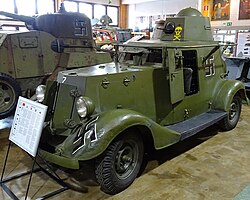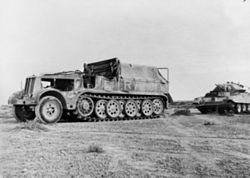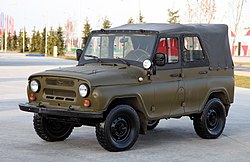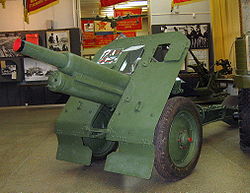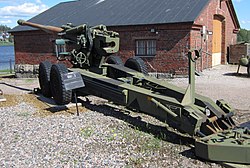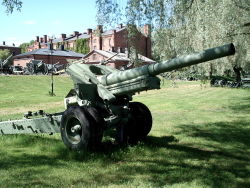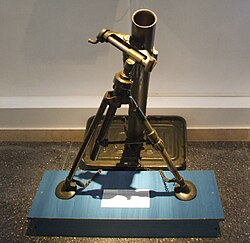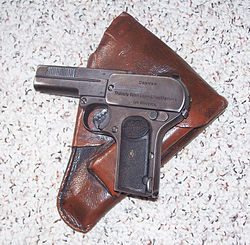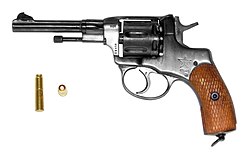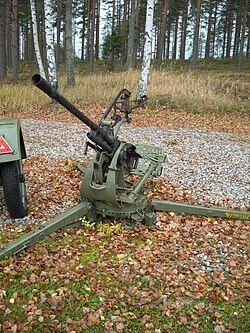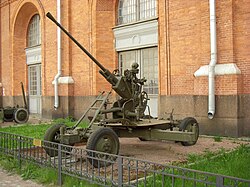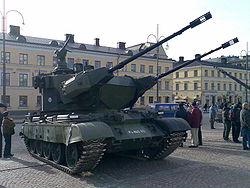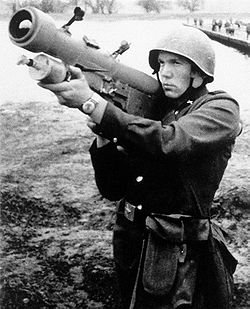Tanks (and tank-based armoured vehicles)
Post-Cold War
Cold War era tanks
| Model | Origin | Type | Quantity | Image | Details |
|---|---|---|---|---|---|
| PT-76 PT-A | Amphibious light tank Driver training tank | 12 units 8 units |  | In use between 1963 and 1994. Some PT-76s were converted into the PT-A training tanks (for the BTR-50) after they stopped being used as light tanks. | |
| T-72M1 T-72M1K T-72M1K1 | Main battle tank Command tank Command tank | 157 units 3 units 2 units |  | In use between 1984 and 2006, 63 T-72M1 and T-72M1K from the Soviet Union in 1984–86, and 97 from ex-East Germany in 1992 (of these 66 were made in Czechoslovakia, and 33 were made in Poland). 162 units total. | |
| T-55, after modernization T-55M T-55K, after modernization T-55MK | Main battle tank Command tank | 64 units 10 units |  | In use since 1966, modernized in 1989, total 74 units, 9 still in use 2021. | |
| T-54 | Main battle tank | 43 units |  | The variant is the T-54-3, also known as M1951. It was in use between 1959 and 1969 (and removed from storage in 2005), 43 units. [1] | |
| Comet Mk I Model B | Cruiser tank | 41 units |  | In use between 1960 and 1971. | |
| Charioteer Mk VII Model B | Medium tank | 38 units |  | In use between 1958 and 1980. | |
| MTU-20 | Bridge laying tank | 4 units |  |
World War II tanks
| Model | Origin | Type | Quantity | Image | Details |
|---|---|---|---|---|---|
| ISU-152 ISU-152V | Self-propelled gun Armoured recovery vehicle | 1 unit 1 unit |  | The standard ISU-152 was captured, operated and abandoned in 1944. Another was captured in 1944 and rebuilt into an armoured recovery vehicle and was used between 1944 and 1959. | |
| Panzerkampfwagen IV Ausf. J | Medium tank | 15 units |  | In use between 1944 and 1962. | |
| Sturmgeschütz 40G (Stu-40) Sturmgeschütz III Ausf. G (StuG III) | Assault gun | 30 units 29 units | 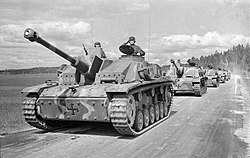 | In use between 1943 and 1966. In use between 1944 and 1966. | |
| KV-1E m 1941 KV-1 m 1942 | Heavy tank | 1 unit 1 unit |  | In use between 1943 and 1954. In use between 1942 and 1954. | |
| T-50 | Light infantry tank | 1 unit |  | Modified in Finland with additional armour. In use between 1942 and 1954. | |
| T-34-76 T-34-85 | Medium tank | 9 units 9 units |  | The short-barreled tanks were m 1941, m 1942 and m 1943 models. These were captured vehicles that were in use between 1941 and 1961. The T34-85 were in use between 1944 and 1961. Two units were registered in the inventory, but were never in operational use. | |
| BT-42 | Assault gun | 18 units |  | Modified Soviet BT-7 tank. In use between 1943 – 1944. | |
| BT-43 | Armoured personnel carrier | 1 unit | Modified Soviet BT-7 tank. In use between 1944 and 1945. | ||
| BT-2 BT-5 BT-7 | Cavalry tank | 15 units 62 units 53 units |  | Several captured in the Winter War and in 1941. The tank was in use only during 1941 and was soon replaced by the T-26 due to its poor reliability. The remaining tanks were either stored, rebuilt, dismantled (turrets being included into permanent casements), or scrapped. | |
| T-28, later modified to T-28E standard T-28E T-28V | Medium tank Medium tank Armoured recovery vehicle | 6 units 1 unit 1 unit |  | Two m 1938 were captured in the Winter War and the remainder in 1941. In use from 1939 to 1950. The T-28V was a modified T-28E and was used from 1945 to 1950. | |
| T-20 m 1937, T-20 m 1938, 1939 | Artillery tractor | 33 units 184 units |  | In use from 1939 to 1959. | |
| T-38 and T-38M-2 T-38-34 T-38-KV | Amphibious light tank | 19 units 11 units 4 units |  | The -34 and -KV were driver training tanks for the T-34 and KV-series of tanks. In use 1939 to 1945. In use 1944 to 1959. In use 1944 to 1959. | |
| T-37A tank | Amphibious light tank | 29 units |  | In use 1939 to 1942. | |
| T-26 m 1931 T-26 m 1933 T-26 m 1937 and T-26 m 1939 OT-26 OT-130 OT-133 T-26E T-26T | Light tank Light tank Light tank Flamethrower tank Flamethrower tank Flamethrower tank Light tank Artillery tractor | 12 units 63 units 36 units 2 units 4 units 3 units 63 units 6 units |  | In use 1939 to 1945. In use 1939 to 1959. In use 1939 to 1959. In use 1939 to 1945. In use 1941 to 1942. In use 1942 In use 1939 to 1959. In use 1942 to 1959. | |
Pre-war tanks
| Model | Origin | Type | Quantity | Image | Details |
|---|---|---|---|---|---|
| Vickers 6-Ton | Light tank | 32 units |  | In use 1933 to 1959. | |
| Vickers-Carden-Lloyd Model 1933 Vickers-Carden-Lloyd Mk VI | Tankette | 1 unit 1 unit |  | Only in use in 1933. | |
| Saint-Charmond modèle 1921 | Light tank | 1 unit |  | In use 1923 to 1937. | |
| Renault FT-17 | Light tank | 34 units |  | In use 1919 to 1942. | |






